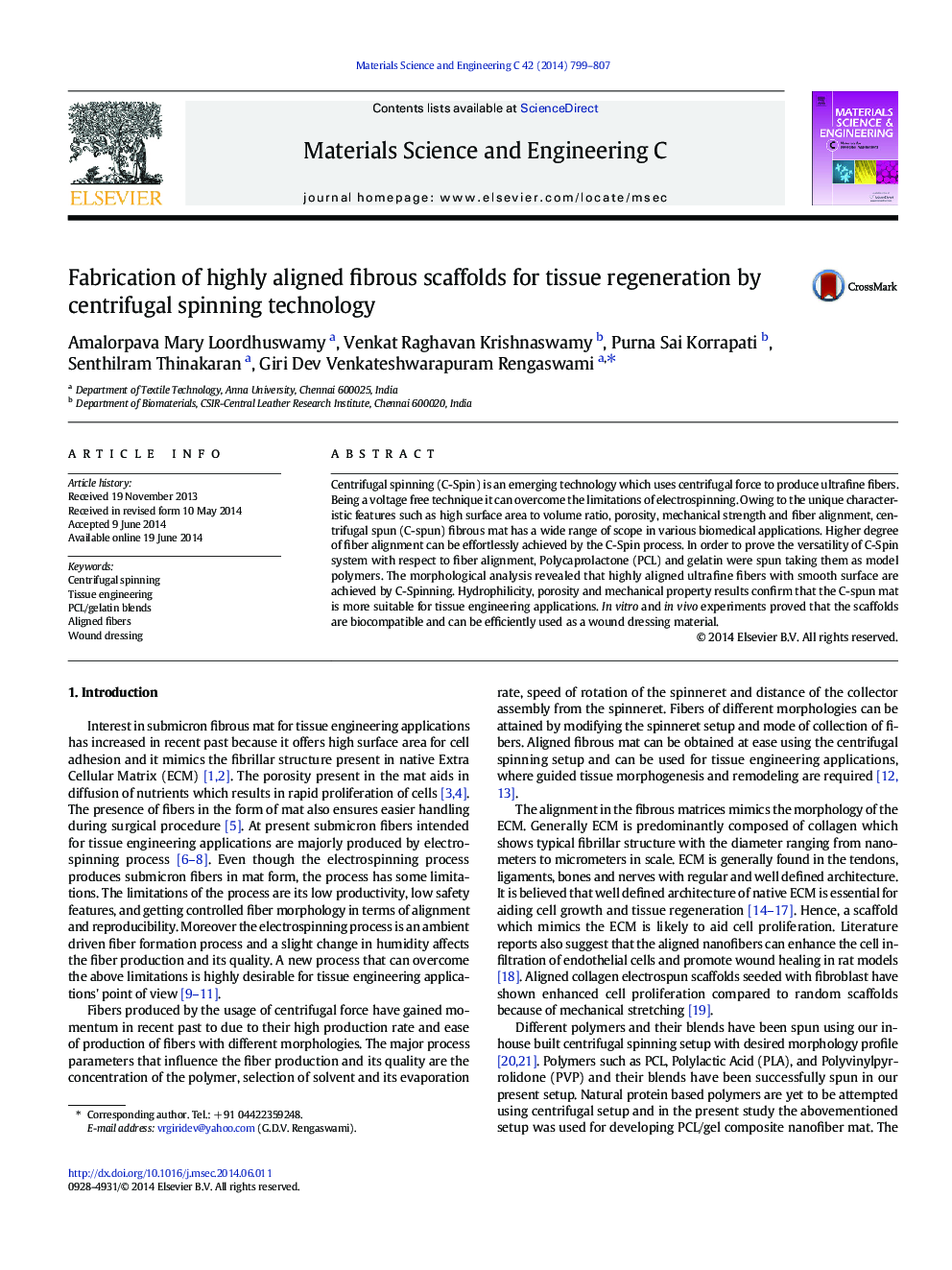| Article ID | Journal | Published Year | Pages | File Type |
|---|---|---|---|---|
| 1428697 | Materials Science and Engineering: C | 2014 | 9 Pages |
•Highly aligned PCL/gelatin fibrous scaffolds were prepared by C-Spinning system.•Degree of fiber alignment was influenced by the proportion of gelatin in the blends.•Direction of cell growth was parallel to the direction of fiber alignment.•C-Spun matrices can efficiently accelerate faster wound healing.
Centrifugal spinning (C-Spin) is an emerging technology which uses centrifugal force to produce ultrafine fibers. Being a voltage free technique it can overcome the limitations of electrospinning. Owing to the unique characteristic features such as high surface area to volume ratio, porosity, mechanical strength and fiber alignment, centrifugal spun (C-spun) fibrous mat has a wide range of scope in various biomedical applications. Higher degree of fiber alignment can be effortlessly achieved by the C-Spin process. In order to prove the versatility of C-Spin system with respect to fiber alignment, Polycaprolactone (PCL) and gelatin were spun taking them as model polymers. The morphological analysis revealed that highly aligned ultrafine fibers with smooth surface are achieved by C-Spinning. Hydrophilicity, porosity and mechanical property results confirm that the C-spun mat is more suitable for tissue engineering applications. In vitro and in vivo experiments proved that the scaffolds are biocompatible and can be efficiently used as a wound dressing material.
Graphical abstractFigure optionsDownload full-size imageDownload as PowerPoint slide
